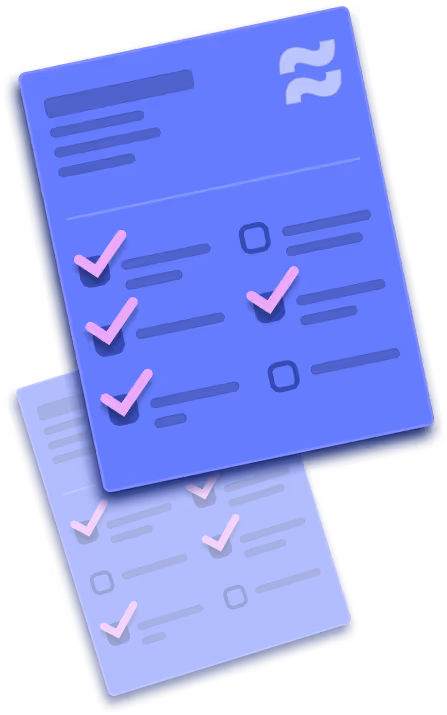
10 Critical WordPress Security Issues & Solutions
Key takeaways
- WordPress is powerful but often targeted by hackers, making strong security measures essential.
- Main risks include outdated plugins, weak passwords, insecure hosting, and poor configurations.
- Regular updates, strong credentials, and limited user permissions prevent most attacks.
- Avoid unverified plugins and insecure third-party integrations or CDNs.
- Larger sites need regular audits and stronger server protections.
- Webflow offers built-in hosting, SSL, and automatic updates for simpler, safer website management.
WordPress is one of the most popular content management systems (CMS) in the world, but with great popularity comes great responsibility. Especially when it comes to security.
WordPress's widespread use makes it a prime target for hackers and cybercriminals, who exploit vulnerabilities to gain unauthorized access, steal data, and disrupt services.
In this blog, I will explore ten critical security issues that WordPress sites commonly face and provide practical solutions to address them.
By taking proactive steps to secure your WordPress site, you can protect your data, safeguard your users, and ensure your site remains operational and trustworthy.
{{cta}}
1. No Security Plugins Installed
WordPress, by default, doesn't come with extensive security measures out of the box. Without security plugins, your website is vulnerable to various types of attacks such as brute force attacks, malware injections, and other malicious activities. Security plugins provide essential features such as firewalls, malware scanning, and login protection.
How to Solve This Issue?
- Install a reputable security plugin: Choose from popular security plugins like Wordfence or Sucuri Security (it is best you research other options as well). These plugins offer comprehensive security features and regular updates to protect against new threats.
- Regularly update your Plugins: Keep your security plugins updated to benefit from the latest security patches and improvements.
- Configure Your Plugin Properly: Ensure you configure the plugin settings according to your website’s needs. This includes setting up firewalls, enabling malware scans, and setting up login protection mechanisms like two-factor authentication (2FA).
2. Outdated Plugins & Themes
Outdated plugins and themes are one of the most common vulnerabilities in WordPress. Hackers exploit known vulnerabilities in outdated software to gain access to websites. Keeping your plugins and themes up-to-date is crucial for maintaining a secure website.
How to Solve This Issue?
- Regular updates: Set a schedule to regularly check and update all plugins and themes. WordPress also allows you to enable automatic updates for plugins and themes.
- Use trusted sources: Only download plugins and themes from the official WordPress repository or trusted developers to ensure they are regularly maintained and secure.
- Remove unused plugins and themes: Uninstall any plugins or themes that are not actively used on your website. Even inactive plugins can pose a security risk if they are outdated and vulnerable.
3. Poor Plugins That Lack Security
Not all plugins are created equal. Some plugins may have poorly written code, lack security measures, or be abandoned by their developers. Using such plugins can expose your website to various security risks, including SQL injections, cross-site scripting (XSS), and other vulnerabilities.
How to Solve This Issue?
- Research before installing: Before installing a new plugin, check its reviews, ratings, and update history. Look for plugins that are regularly updated and have positive feedback from users.
- Limit the number of plugins: Only install plugins that are absolutely necessary for your website’s functionality. Fewer plugins mean fewer potential vulnerabilities.
- Security audits: Use tools like WPScan to scan your website for insecure plugins and take appropriate action to mitigate risks.
4. Unsecure Hosting Environment
The security of your WordPress site is heavily dependent on the security of your hosting environment. An unsecure hosting environment can lead to vulnerabilities such as data breaches, server-side attacks, and unauthorized access to your website files.
How to Solve This Issue?
- Choose a reputable hosting provider: Select a hosting provider that prioritizes security. Look for features such as SSL certificates, server monitoring, regular backups, and security protocols.
- Use managed WordPress hosting: Managed WordPress hosting providers often offer enhanced security features specifically designed for WordPress websites. This can include automatic updates, malware scanning, and optimized server configurations.
- Implement server-side security measures: Ensure your server is configured with security measures like firewalls, intrusion detection systems, and regular security audits. Work with your hosting provider to implement these measures.
5. Weak Login Credentials
Weak login credentials make it easy for hackers to gain access to your WordPress admin panel through brute force attacks. Using simple passwords and common usernames can significantly compromise your website's security. To strengthen protection, consider using free password managers that generate and store complex passwords securely.
How to Solve This Issue?
- Use strong passwords: Create complex passwords that include a combination of upper and lower case letters, numbers, and special characters. Avoid using easily guessable passwords like "password123" or "admin."
- Change default usernames: Avoid using the default username "admin." Create a new admin user with a unique username and delete the default "admin" user.
- Enable two-factor authentication (2FA): Implement 2FA for an added layer of security. This requires users to provide two forms of identification before gaining access to the admin panel.
6. Lack of Control Over User Roles and Permissions
Improper management of user roles and permissions can lead to unauthorized access and potential security breaches. Giving users more access than they need can increase the risk of accidental or malicious actions.
How to Solve This Issue?
- Assign appropriate user roles: Assign roles based on the principle of least privilege. Only grant users the minimum level of access they need to perform their tasks.
- Review user roles regularly: Regularly review and update user roles and permissions to ensure they are still appropriate. Remove access for users who no longer need it.
- Use role management plugins: Use plugins like User Role Editor to customize and manage user roles and capabilities. This allows you to fine-tune permissions and restrict access as needed.
7. Misconfigured Web Servers
Misconfigured web servers can expose your WordPress site to a range of security vulnerabilities, including unauthorized access, data leaks, and server-side attacks. Ensuring your server is properly configured is crucial for maintaining a secure website.
How to Solve This Issue?
- Regular security audits: Conduct regular security audits to identify and fix misconfigurations. Use tools like Nmap or Nikto to scan your server for vulnerabilities. For comprehensive assessments, consider engaging penetration testing companies that can conduct thorough security evaluations and identify vulnerabilities that automated tools might miss.
- Secure server configurations: Implement secure server configurations by disabling unnecessary services, restricting file permissions, and using secure communication protocols (e.g., HTTPS). Configure your server to limit information disclosure.
- Update and patch regularly: Keep your server software and components up to date with the latest security patches and updates to protect against known vulnerabilities.
8. Insecure Third-Party Integrations
Integrating third-party services and plugins can enhance your WordPress site’s functionality, but they can also introduce security risks if not properly vetted and secured. Insecure integrations can lead to data breaches, unauthorized access, and other security issues.
How to Solve This Issue?
- Vet third-party services: Before integrating any third-party service, conduct thorough research to ensure it is reputable and secure. Look for reviews, security certifications, and a history of updates.
- Use secure APIs: Ensure that any third-party integrations use secure APIs with encryption and proper authentication methods. Avoid using outdated or insecure integration methods.
- Regularly review integrations: Periodically review all third-party integrations for any updates or security patches. Remove any integrations that are no longer needed or supported.
9. Poorly Configured CDN
Content Delivery Networks (CDNs) can improve the performance and availability of your WordPress site, but a poorly configured CDN can introduce security vulnerabilities. Misconfigurations can lead to data exposure, unauthorized access, and other security issues.
How to Solve This Issue?
- Choose a secure CDN provider: Select a CDN provider that prioritizes security and offers features such as DDoS protection, SSL support, and secure token authentication.
- Implement HTTPS: Ensure that your CDN is configured to use HTTPS to encrypt data in transit. This prevents data interception and tampering.
- Configure access controls: Set up access controls to restrict who can modify your CDN settings. Use strong authentication methods and monitor access logs for suspicious activity.
10. Misconfigured WordPress Database
A misconfigured WordPress database can lead to data breaches, loss of data, and unauthorized access. Properly configuring and securing your database is essential for maintaining the integrity and security of your website’s data.
How to Solve This Issue?
- Use strong database credentials: Create strong, unique usernames and passwords for your database. Avoid using the default database prefix (wp_) and change it to something unique to reduce the risk of SQL injection attacks.
- Restrict database access: Limit database access to only those users who need it. Use the principle of least privilege to restrict database permissions and prevent unauthorized access.
- Regular backups and monitoring: Regularly back up your database and store backups securely. Monitor your database for any unusual activity or unauthorized access attempts. Use tools like Wordfence or Sucuri to monitor database security.
{{cta}}
Common WordPress Security Breaches
Here’s a brief overview of some of the security breaches and cyberattacks that could happen if you start neglecting your WordPress security.
- Malwares and viruses: Malicious software and viruses can infect your WordPress site, leading to data theft, unauthorized access, and compromised website functionality.
- SQL injections: SQL injection attacks occur when malicious actors insert harmful SQL code into your database queries, potentially allowing them to access, modify, or delete sensitive data.
- XSS (Cross-Site Scripting) attacks: XSS attacks involve injecting malicious scripts into webpages, which can then execute in the browser of anyone who visits the compromised site, potentially stealing cookies, session tokens, or other sensitive information.
- Phishing: Phishing attacks trick users into providing sensitive information such as login credentials by disguising malicious sites or emails as legitimate ones.
- SEO Spam: SEO spam involves injecting spammy keywords, links, and content into your site to manipulate search engine rankings, often leading to blacklisting by search engines.
- DDoS (Distributed Denial of Service) attacks: DDoS attacks overwhelm your website with a flood of traffic from multiple sources, causing it to slow down or crash, making it inaccessible to legitimate users.
- Brute force attacks: Brute force attacks involve repeatedly trying different username and password combinations to gain unauthorized access to your WordPress admin panel.
Is WordPress Secure?
WordPress can be secure, but it requires proactive maintenance and vigilance on both the server side and the WordPress side. By default, WordPress is designed with security in mind and offers a robust platform for building websites. However, like any software, it is not immune to vulnerabilities and requires regular attention to stay secure.
For small sites, maintaining security is relatively straightforward. This involves:
- Installing security plugins: Utilizing reputable security plugins such as Wordfence, Sucuri, or iThemes Security to add layers of protection against common threats.
- Regular updates: Keeping WordPress core, themes, and plugins updated to their latest versions to ensure all security patches are applied.
- Strong passwords and user management: Using strong, unique passwords and carefully storing them in an open source password manager to minimize risk.
As websites grow and become more complex, ensuring comprehensive security can become more challenging. Larger sites often face increased security risks due to higher traffic volumes and more complex integrations. Scalability in security for larger sites may involve additional measures, including:
- Enhanced server security: Implementing advanced server-side security measures such as firewalls, intrusion detection systems, and secure server configurations.
- Regular security audits: Conducting frequent security audits to identify and address vulnerabilities.
- Managed WordPress hosting: Opting for managed WordPress hosting services that offer specialized security features tailored to WordPress sites.
- Custom security solutions: Developing custom security protocols and solutions to address specific needs and threats unique to your site.
These enhanced security measures can come with additional costs, both in terms of financial investment and the time required to manage them. However, these costs are often justified by the protection they provide against potential security breaches, which can be far more costly in terms of data loss, reputational damage, and downtime.
How to Increase Overall Security of Your Website: An Alternative
Due to the nature of WordPress, it shouldn't be everyone's #1 choice, especially when security is a primary concern. WordPress, while powerful and flexible, requires regular maintenance and vigilant security practices from the user. This can be manageable for some, but for others, it can be a significant burden, particularly as the website scales.
One effective way to increase the overall security of your website is by using an alternative website builder that comes with integrated hosting options.
This approach shifts the responsibility of security maintenance from the user to the service provider, ensuring that your site is continuously protected by professionals.
Webflow: A Secure Alternative
Webflow is an excellent example of such a platform. It offers several advantages over WordPress in terms of security:
- Integrated hosting: Webflow provides integrated hosting with built-in security features. This means that security updates, server configurations, and other technical aspects are managed by Webflow's team, reducing the risk of vulnerabilities.
- Automatic updates: Unlike WordPress, where you need to manually update the core, themes, and plugins, Webflow automatically updates its platform. This ensures that your website is always running on the latest, most secure version.
- SSL certificates: Webflow includes free SSL certificates for all hosted websites, ensuring encrypted connections and protecting user data from interception.
- No plugins needed: Webflow’s design and development tools are built-in, eliminating the need for third-party plugins. This reduces the risk of vulnerabilities often introduced by outdated or poorly maintained plugins in WordPress.
- Enhanced DDoS protection: Webflow’s hosting infrastructure includes robust DDoS protection, safeguarding your site against malicious traffic that can lead to downtime and security breaches.
- Regular backups and security monitoring: Webflow provides regular backups and continuous security monitoring, ensuring that your site is always protected and can be quickly restored in case of any issues.
In summary, while WordPress can be secure with proper maintenance, using a platform like Webflow that integrates hosting and security management simplifies the process and enhances overall website security. This makes Webflow a better choice for those looking to minimize security risks and reduce the complexity of website management.
{{cta}}
FAQ for WordPress Security Issues
What is the best way to perform a WordPress security audit?
Perform a WordPress security audit by scanning your website with tools like WPScan, checking for outdated plugins/themes, reviewing user roles, inspecting file permissions, and analyzing server configurations. Regular audits help identify vulnerabilities before they can be exploited.
How does managed WordPress hosting improve site security?
Managed WordPress hosting improves site security by offering automatic updates, daily backups, malware scanning, DDoS protection, and expert support. These services reduce the risk of human error and ensure best practices are consistently applied to your server environment.
How does WordPress compare to Webflow in terms of maintenance responsibilities?
WordPress requires the user to manage updates, plugins, and security, while Webflow handles these tasks through its integrated platform. This makes Webflow a lower-maintenance option for users prioritizing security and ease of use over extensive customization.
Which free tools can help monitor WordPress site activity for suspicious behavior?
Free tools like Wordfence, Jetpack Security, and WP Activity Log can help monitor WordPress site activity for unusual logins, file changes, and plugin modifications, allowing you to respond quickly to potential security threats.
What security headers should I add to my WordPress site?
Enhance WordPress security by adding headers like Content-Security-Policy, X-Frame-Options, X-XSS-Protection, HTTP Strict Transport Security (HSTS), and Referrer-Policy. These help mitigate XSS, clickjacking, and other vulnerabilities in browser-based attacks.
Can regular backups alone protect a WordPress site from cyberattacks?
While regular backups help recover a compromised site, they do not prevent attacks. A comprehensive security strategy should include firewalls, malware scanning, strong credentials, and secure hosting in addition to reliable backup schedules.
What are the signs your WordPress site may have been hacked?
Common signs include sudden traffic drops, unexpected content changes, unknown admin accounts, frequent redirects, slow performance, or warnings from search engines. Use security plugins and server logs to confirm and investigate breaches.






.svg)





-min.png)

.webp)








.png)

.png)
.png)








.svg)

.png)
.png)
.webp)
.svg)

